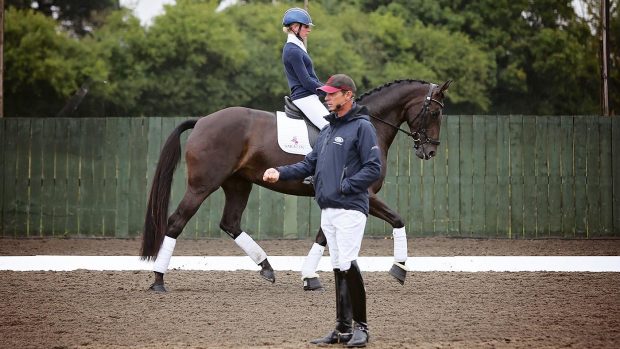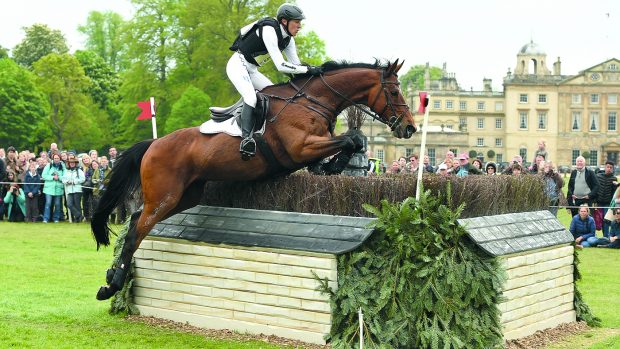An event rider up to intermediate level, Dannie has taken the dressage competition world by storm in recent years. In just three seasons, he has notched up 13 regional titles and six winter championships, as well as a national championship title. Here he explains how to generate impulsion, which features in the scales of training, without going faster.
Training the stars
I use this exercise with every horse I ride and at every level. I still find it extremely useful with my top horse Southern Cross Braemar (pictured), who is competing at small tour level and training towards grand prix.
It is common to confuse impulsion with speed. I describe impulsion as jump, rhythm and engagement — riding with controlled power.
If you have a horse that tends to sit behind the leg and it feels as though it’s difficult to generate impulsion, it is important to question why. Is your horse sufficiently warmed up? Is your horse blocking through the rein? Is he lacking suppleness? Sometimes, it can just be a matter of ineffective or incorrect aids.
It’s important that you focus on the signals you are sending to your horse — ensure you are giving clear instructions that are effective and that you aren’t just nagging. The solution is good communication, which I achieve by practising transitions — and lots of them.
How to generate impulsion without going faster
1. Once warmed up, practise riding transitions such as trot-walk-trot — ideally with only a small number of walk steps between each transition to trot. This will help to improve reaction time and will make your horse more responsive to your leg and hand aids.
It is important to use frequent half-halts throughout to rebalance and improve engagement.
2. Reduce the number of walk steps you take each time you ride a transition. Repeat this exercise until you feel confident that your horse is responding quickly and easily to your aid.
Eventually, you should feel that he is reacting faster to your aids in general, in different paces.
3. You can then move onto transitions within the pace. For example, transitions between working and medium canter.
When asking for a medium canter, you are looking for the canter to cover more ground. Ask your horse to lengthen his stride for no more than four to five strides before making a transition back to working canter.
Repeat this exercise until you feel this is happening with ease.
Consider this…
- It is common for riders to over-ride a horse when trying to create impulsion. This results in speed, which manifests itself as running and loss of balance. Make sure your leg aid is clear and effective.
- It is important not to restrict or block with your hand by being too strong in the rein. Rebalance your horse by using half-halts rather than strength.
- It is important to reward success quickly — soften the rein and praise with your voice.
You might also be interested in:

The scales of training explained for horse riders of all levels

#SundaySchool: perfecting pirouettes with Rebecca Hughes
The international dressage rider and young horse producer explains how walk pirouettes can improve engagement for medium trot

Subscribe to Horse & Hound this spring for great savings
Horse & Hound magazine, out every Thursday, is packed with all the latest news and reports, as well as interviews, specials, nostalgia, vet and training advice. Find how you can enjoy the magazine delivered to your door every week, plus options to upgrade your subscription to access our online service that brings you breaking news and reports as well as other benefits.




